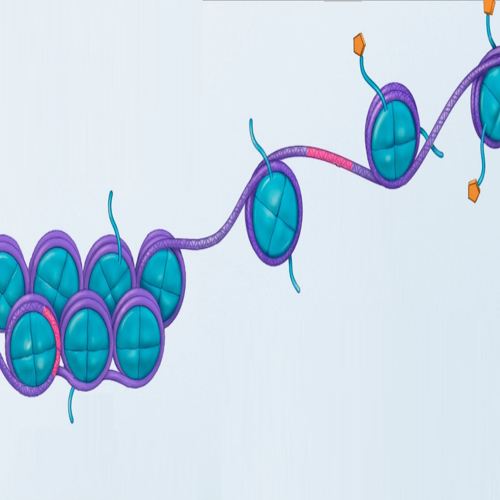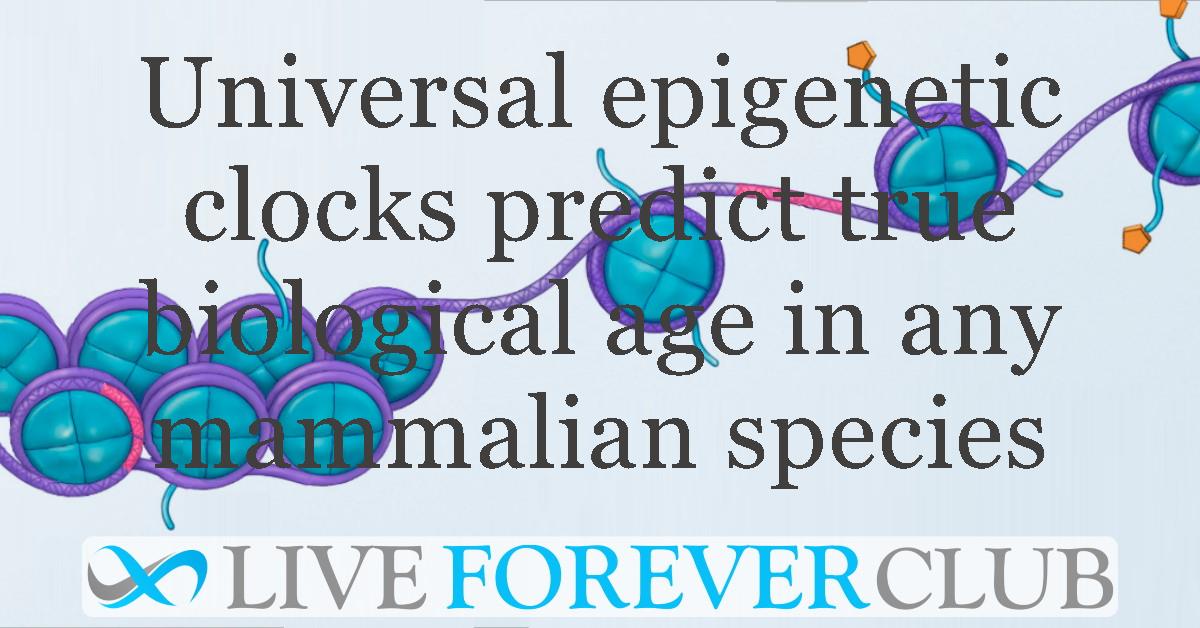A preprint version of the study published in bioRxiv described evolutionarily conserved cytosines involved in the ageing process across mammalian species using pan-mammalian epigenetic clocks (1).
Ageing is associated with tissue-specific changes, whereas DNA methylation has similar changes across various ageing tissues. DNA methylation is an epigenetic process involving the transfer of methyl group onto cytosine (termed as cytosine methylation), which regulates/modifies gene expression (2). This mechanism has led to the development of an epigenetic clock for each species to estimate epigenetic age. Species-specific ageing clocks were available for all tissues of humans, mice, and other species; these ageing clocks are uneconomical and ineffective for comparison studies of different species. As ageing is a universal process, researchers aimed to build pan-mammalian epigenetic clocks that measure age in all mammalian species and tissues, as well as identified and characterized cytosines whose methylation levels change with age in all mammals. This study was led by Steve Horvath from University of California, Los Angeles.
Using array-based technology, analysis was carried out on 11,754 methylation arrays from 59 tissue types derived from 185 mammalian species (age ranging from prenatal to 139 years). Each array targeted up to 36,000 cytosine-phosphate-guanine (CpG) dinucleotides that are highly conserved across many mammals, allowing the identification of methylated CpGs in each mammal.
AGE PREDICTORS
Researchers have developed three pan-mammalian epigenetic clocks, each with a mathematical formula, to accurately predict the age of any mammalian tissue. The three pan-mammalian age estimators are as follows:
- Basic clock (Clock 1) directly correlates chronological age with DNA methylation levels. However, its usefulness is limited when comparing species with different maximum lifespans.
- Universal relative age clock (Clock 2) estimates individual age relative to the maximum lifespan of each species, generating a relative age value between 0 and 1.
- Universal log-linear transformed age clock (Clock 3) uses the age at sexual maturity and gestation time of the species, instead of the maximum lifespan.
Clocks 2 and 3 were found to be accurate and applicable to any mammalian species, whereas Clock 1 showed poor correlation between epigenetic age and chronological age in some species such as bowhead whales. A consistently high age correlation was observed across brain regions (whole brain, cerebellum, cortex, hippocampus, and striatum), organs (spleen, liver, and kidney), blood, and skin.
Moreover, the potential applications of pan mammalian clocks are to estimate the mortality risk in humans and mice, as well as to perform various human cellular reprogramming experiments and anti-ageing studies on mice.
CYTOSINE METHYLATION
Methylation of cytosines in CpG dinucleotides plays a major role in the normal development process. In mammals, the methylation level of CpGs at some DNA sequences mostly increases with age and ultimately modifies gene expression. Positively age-related CpGs (CpGs that gain methylation with age) are associated with developmental genes, while negatively age related CpGs (CpGs that lose methylation) are related to circadian rhythm and mitochondria whose functions are progressively lost with age.
Interestingly, these age-related CpGs are specific in terms of their location and proximity to the nearest gene components. Methylated CpGs are often found at PRC2-binding sites and bivalent regulatory regions, known as bivalent promoters 1 and 2 — regions that regulate gene expression in the process of development. In terms of proximity, age-related CpGs are proximal to the gene pairs LHFPL3/4, ZIC2/5, PAX2/5 and CELF4/6.
In most species, CpGs with positive age correlations are located at sites that lose chromatin accessibility with age in differentiated cells, which increases the likelihood that intracellular molecular alterations may cause age-related methylation changes.
In highly proliferative tissues, age-related loss of methylation is observed in CpGs located in inactive genomic regions as well as heterochromatin regions. In non-proliferative tissues (brain and muscle), age-related loss of methylation is noticed in CpGs of the exon-associated transcription state (TxEx4), which is most highly enriched for transcription termination sites and is associated with the highest gene expression levels across many cell and tissue types. The most hypomethylated cytosine is proximal to the LARP1 gene, which is involved in translation of downstream targets of the mTOR pathway that is linked to ageing, longevity, and epigenetic ageing.
Age-related CpGs showed age reversal through transient expression of Yamanaka factors, and the overlap between the targets of these factors and age-related CpGs. These age-related changes on the mammalian epigenome reveal that ageing is not a sole consequence of random cellular damage accrued over time, but is also associated with mammalian development. The findings are consistent with previous literature that showed a connection between growth/development and aging.
CONCLUSION
Epigenetic aging is universal across all mammalian species and captures multiple processes and manifestations of age that were formerly thought to be unrelated. The availability of these epigenetic clocks uncovers common age-related factors and provides a deep and comprehensive understanding of mammalian aging.
References:
1. Lu AT et al; "Universal DNA Methylation Age Across Mammalian Tissues." bioRxiv; 1/18/2021. DOI: 10.1101/2021.01.18.426733
2. Robertson KD; "DNA Methylation and Human Disease." Nature Reviews. Genetics; V.6; No.8; 2005; p597-610. DOI: 10.1038/nrg1655






